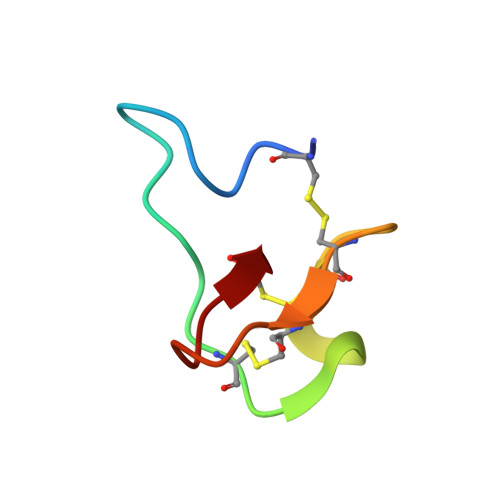Challenging the state of the art in protein structure prediction: Highlights of experimental target structures for the 10th Critical Assessment of Techniques for Protein Structure Prediction Experiment CASP10.
Kryshtafovych, A., Moult, J., Bales, P., Bazan, J.F., Biasini, M., Burgin, A., Chen, C., Cochran, F.V., Craig, T.K., Das, R., Fass, D., Garcia-Doval, C., Herzberg, O., Lorimer, D., Luecke, H., Ma, X., Nelson, D.C., van Raaij, M.J., Rohwer, F., Segall, A., Seguritan, V., Zeth, K., Schwede, T.(2014) Proteins 82 Suppl 2: 26-42
- PubMed: 24318984
- DOI: https://doi.org/10.1002/prot.24489
- Primary Citation of Related Structures:
2M7T, 4CSO - PubMed Abstract:
For the last two decades, CASP has assessed the state of the art in techniques for protein structure prediction and identified areas which required further development. CASP would not have been possible without the prediction targets provided by the experimental structural biology community. In the latest experiment, CASP10, more than 100 structures were suggested as prediction targets, some of which appeared to be extraordinarily difficult for modeling. In this article, authors of some of the most challenging targets discuss which specific scientific question motivated the experimental structure determination of the target protein, which structural features were especially interesting from a structural or functional perspective, and to what extent these features were correctly reproduced in the predictions submitted to CASP10. Specifically, the following targets will be presented: the acid-gated urea channel, a difficult to predict transmembrane protein from the important human pathogen Helicobacter pylori; the structure of human interleukin (IL)-34, a recently discovered helical cytokine; the structure of a functionally uncharacterized enzyme OrfY from Thermoproteus tenax formed by a gene duplication and a novel fold; an ORFan domain of mimivirus sulfhydryl oxidase R596; the fiber protein gene product 17 from bacteriophage T7; the bacteriophage CBA-120 tailspike protein; a virus coat protein from metagenomic samples of the marine environment; and finally, an unprecedented class of structure prediction targets based on engineered disulfide-rich small proteins.
Organizational Affiliation:
Genome Center, University of California, Davis, California, 95616.














